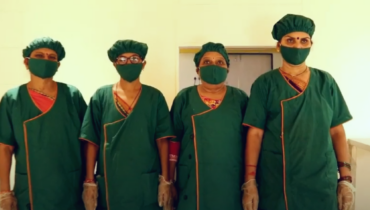Increasing female economic participation is needed to address violence against women in Latin America, according to the World Bank, the World Health Organization, the Inter-American Development Bank and other international actors. In the past two decades in Mexico, female labor force participation has doubled within the context of decreasing rates of violence against women. However, there has been limited research conducted on the ways in which non-governmental organizations (NGOs) in Mexico are working to integrate violence prevention and economic empowerment, and the challenges they face in their work. The lack of knowledge of best practices impedes the government and organizations from replicating and scaling programs that successfully reduce violence against women through economic empowerment. The need for effective, evidence-based programming is critical, considering that violence against women still affects almost half of Mexican women: 46.6% stated in 2011 that they had faced at least one form of violence (psychological, economic, sexual or physical).
This gap in knowledge prompted my research with the Georgetown Institute for Women, Peace and Security and the Fuentes Foundation into current programs in Mexico that address women’s economic participation and/or violence against women. In the summer of 2015, I conducted interviews with the leaders of 16 NGOs working on these issues in Mexico. Each NGO leader recognized the need to integrate women’s economic empowerment and violence prevention. However, many found it difficult to include violence prevention and/or economic empowerment in their organization’s programming due to the sensitivity around gender-based violence; lack of resources, capacity and expertise; and a lack of data which makes it challenging to make the business case for integration. Additionally, some organizations did not include violence prevention or economic empowerment in their theories of change, which caused these issues to be neglected even further. Finally, few organizations seemed to be working on the issue of economic violence, due to the lack of media and policy attention it generates, and the lack of perceived urgency around the issue as compared to other forms of violence against women, such as trafficking, which receives more funding. The relative lack of attention to economic violence in Mexico is surprising since economic violence is the second most prevalent form of violence according to the 2011 ENDIREH survey (the government-led nation-wide study on intimate partner violence).
How can NGOs better integrate economic empowerment and preventing violence against women? Partnerships between violence prevention organizations and economic empowerment organizations are one solution to this issue, but they are rare due to NGOs’ lack of funding in this area and the non-profit world’s limited history with partnerships. Another constraining factor is NGOs’ small peer networks: they lack the network to expand or advocate for their work, especially with corporations.
Several recommendations emerged from my research for these organizations to deepen their work on violence prevention and/or women’s economic empowerment.
Funders should direct more funding towards:
Partnership building: Funders should encourage, incentivize and help NGOs build partnerships and alliances across sectors and encourage NGOs who feel that domestic violence is a sensitive issue to talk about it.
Capacity building: Many NGOs lack the skills and time to take a step back from their work and learn about how they can integrate violence prevention and/or economic empowerment in their work. Funders could strengthen NGO capacity by holding workshops on violence and economic empowerment for their grantees during their annual grantee meeting.
Data collection and research: Funders should invest more funding in data collection and research on the link between violence prevention and women’s economic empowerment in order to provide NGOs with the business case for integration.
Addressing economic violence: Funding trends have been skewed towards trafficking at the detriment of other forms of gender-based violence, despite the fact that economic violence is the second most prevalent form of violence against women. NGOs will not be able to respond to economic violence without support from their funders.
Organizations should:
Review their theory of change and see how violence prevention and/or economic empowerment can be incorporated to strengthen the effectiveness of their programs.
Consider including men in their programming, where possible, especially in relation to economic violence.
Take into account the different forms of violence, including economic violence, when addressing violence in their programs.

